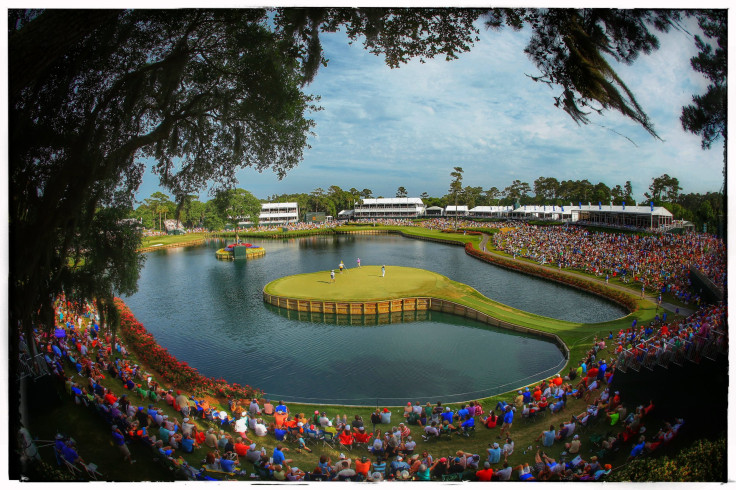PGA Championship 2015: Whistling Straits' Architect Pete Dye Shaped Golf Through Design

Jonathan Taylor stopped during his round of golf along the water, breathlessly taking in the breeze coming off the lake. It felt like the seaside in Ireland or Scotland. But this wasn’t the Old Course at St. Andrews, known as the "Home of Golf." It was in Sheboygan, Wisconsin, a small Midwestern city of about 50,000, some 50 miles outside of Milwaukee.
Taylor was at Whistling Straits along Lake Michigan, a links-style course created by the sport’s most famous architect, Pete Dye. “When I stepped on those grounds … It was honestly a surreal type of golf experience,” said Taylor, a 20-year-old student at Denison University in Ohio who played the course two summers ago with his father.
Whistling Straits is the host course for this weekend’s 2015 PGA Championship, and it's one of Dye’s finest, if not golf's, finest, designs. While some watchers may dissect Tiger Woods’ swing, or Jordan Spieth’s chances of winning a third major tournament in one year, the game’s aficionados and wishful weekend golfers will be marveling at Dye’s creation. The course has all his creative hallmarks, with sweeping panoramic views of Lake Michigan, imposing greens and sandy bunkers tossed about like loose change. It’s the third time the PGA Championship will be held here and the sixth time a Dye creation has hosted the tournament. Time and again, the PGA Tour returns to his courses for big tournaments, a testament to the still-working 89-year-old who has, with a tractor and his imagination, shaped the way golf is played.
Building The Game
Golf course architecture is considerably more important to its sport than, say, the design of a football stadium, because it materially affects the outcome of the game being played. Each course is unique and forces the player to adjust to its intricacies. In most sports, the athletes square off against another team or individual. In golf, you’re measured by how well you do against the course. With that in mind, each choice an architect makes -- every tree, bunker or blade of grass -- is made deliberately.
Trends in design come and go, and when Dye entered the business in the 1960s, the prevailing approach was to make courses long to combat players’ increasing power.

Over time, Dye became known as a free-wheeling but demanding designer who caused ripples of change throughout golf. A savant of sorts, Dye famously never used blueprints, preferring to walk the plot of land and jot vague ideas that were sure to change once the dirt started moving. He’d even push the dirt himself in a tractor until things were done right and his vision for the course was realized.
“I never have drawn plans. I go out there and I yell at [the shapers] and scream at them and talk to them. Most of ’em come out pretty good, I guess,” Dye told PGA.com in June. “Good” is a bit of an understatement for the only living architect in the World Golf Hall of Fame.
'Golf Is Not A Fair Game'
Dye first shifted the course-design paradigm when he began his career, making a name for himself by focusing on finesse and design quirks to make courses more difficult. He also brought over ideas from European courses. Namely, Dye began using railroad ties to shore up eroding bunkers and created shifty, contoured greens.
After players began hitting the ball even farther and grew even more skilled, Dye shifted again, said Bill Coore, a course architect who started his career working for Dye and is now one of the top 10 designers in the world, according to a Golf Digest list. Dye made his courses longer but also played mind games with the golfers.
“A lot of people in our profession believe the best defense against the best players in the world is not length … but doubt,” Coore said.
Dye rattles nerves better than any other designer, Coore said, recalling a memorable exchange he had about Dye’s design. “Pete gives you something to look at on every hole -- and usually it’s something you don’t want to look at,” he said he was once told.
A prime example of a nerve-inducing hole is perhaps Dye's most famous creation: No. 17 at TPC Sawgrass in Florida. Its island green is intimidating, a small target for a short shot pros would typically land with ease. But the hole regularly causes complete shanks or slides borderline shots into the awaiting water.
“Pete’s the only golf course architect in history -- at least in my opinion -- that changed the course of history twice,” Coore said.

Dye has a reputation for courses that are exceptionally difficult, and he doesn’t seem to mind that. “Golf is not a fair game, so why build a course fair?” Dye said in his profile for the World Golf Hall of Fame to sum up his design approach. His courses are tough enough that professionals -- men and women who can hit a golf ball within a few feet of any place they aim -- shy away from taking risks when playing them.
“When somebody’s leading with two or three holes left on a Pete Dye golf course, it’s not over,” said Tom Doak, another top 10 architect. “Dye understands the pro game as well as anyone ever has. That means [his courses are] very hard by everyone else’s standards.”
A Lasting Legacy
Dye’s courses will remain atop the bucket lists for golfers everywhere, his approach allowing for signature holes that stick in the minds of fans. That’s part of his legacy. But he’s also mentored a number of course designers into prominence who will continue to build top courses.
Along with Doak and Coore, notable architects like Greg Norman, Tim Liddy and Rod Whitman all learned from Dye. Jack Nicklaus -- the consensus greatest golfer of all time and now considered one of the game’s best architects -- also largely learned the ropes from him. At the same time, Dye has inspired a number of copycat designs and helped turn the pack toward new ideas.
“There have been people in our profession who for years now have copied Pete. Almost every single person has copied Pete,” Coore said.
But while some other courses might look like a Dye creation, they’re not often of the same quality. The phrase “This is a Pete Dye course” holds the weight of a career that helped shape modern golf.
“No one, [not] the most famous architects in the world … No one has the name recognition Dye does,” said Joel Zuckerman, a golf writer who has written extensively about courses and authored a book on Dye. “If there was a Mount Rushmore of golf course architecture, there’s no way you could leave him off.”
Creating Whistling Straits
Whistling Straits, the 2015 PGA Championship host course, is something that would be nearly impossible for another designer to copy. It’s an Irish course, sprung from Dye’s imagination and laid across Wisconsin land.
Whistling Straits' owner, billionaire Herb Kohler, like Dye, is stubborn and willful, and insistent with his ideas, author Zukerman said. (He wrote a book that detailed the relationship between the two men.) Kohler’s directive to Dye was to create a slice of Ireland out an entirely unremarkable plot of land that used to be an airfield. Its main redeemable quality was that it sat along the shores of Lake Michigan.

“Whistling Straits, from what I understand of it, is a tribute to Pete’s imagination,” Coore said. “It’s not easy making something of nothing.”
After some tumult, including Dye outright refusing the direction of his boss, Kohler in 1998 got the sparkling result he wanted. It’s a typical Dye creation, featuring a staggering 1,012 bunkers, sheer cliffs hugging Lake Michigan and untamed fescue rough. But it’s also stunning visually, its rolling fairways and undulating greens kissing the edge of the lake’s shoreline. Dye turned an abandoned stretch of land into a course ranked No. 22 in America by Golf Digest. It will be on display in all its glory Thursday through Sunday, the first two days broadcast on TNT before switching to CBS over the weekend.
Taylor, the Denison student who is on the golf team at his university, said he was aware he was playing one of Dye’s gems while he roamed the course and marveled at the exceptionally long par 3 17th hole, nicknamed “Pinched Nerve.” It was stunningly beautiful while simultaneously incredibly difficult.
“There’s just not very much room to miss,” he said. “You've got to hit it dead straight or you’re going to be in a bad position.”
And if you do miss, well, nobody said golf was fair.
© Copyright IBTimes 2024. All rights reserved.






















